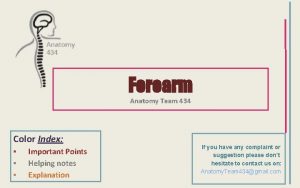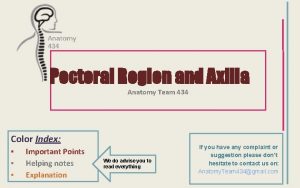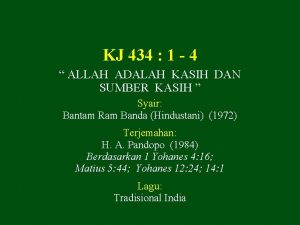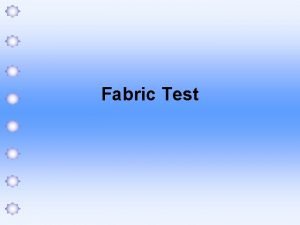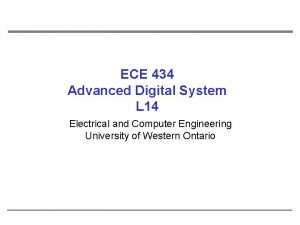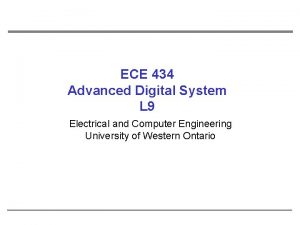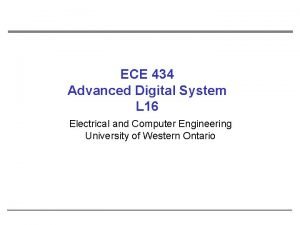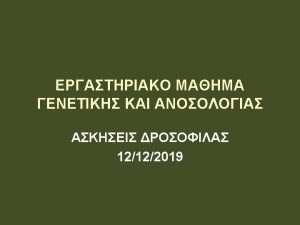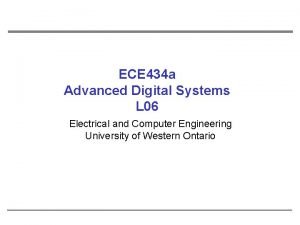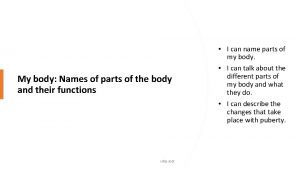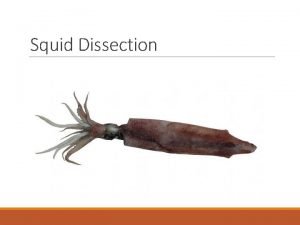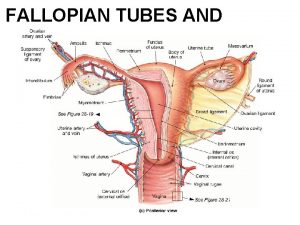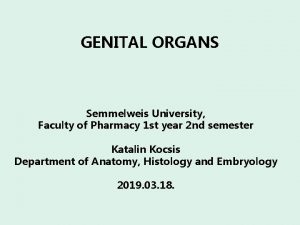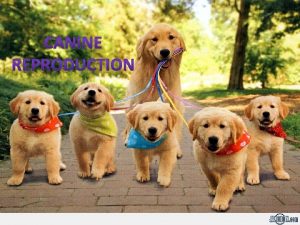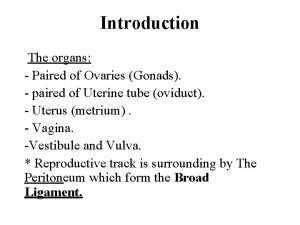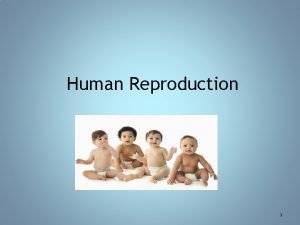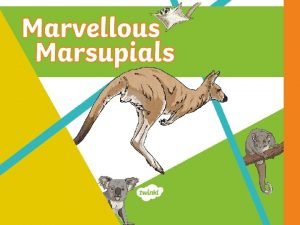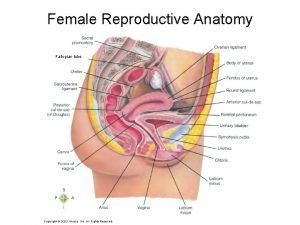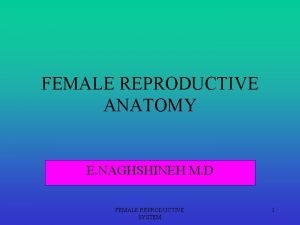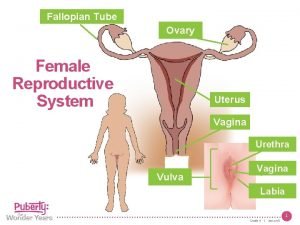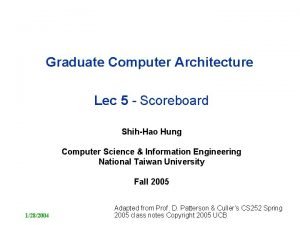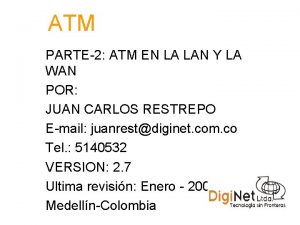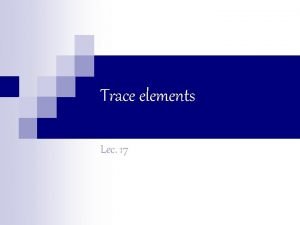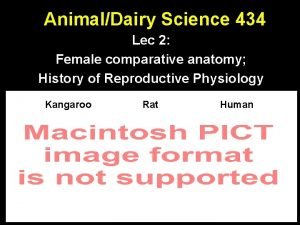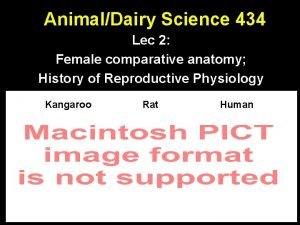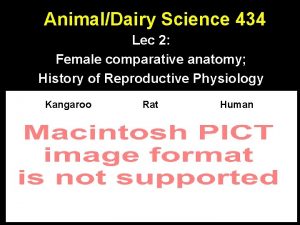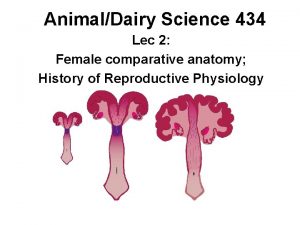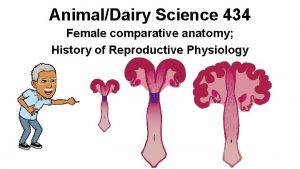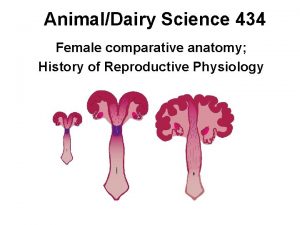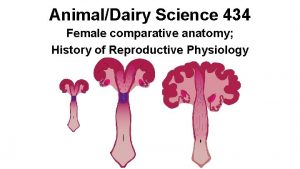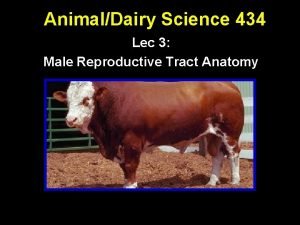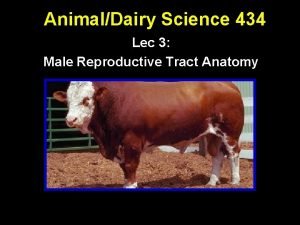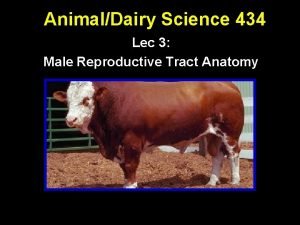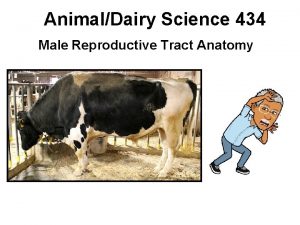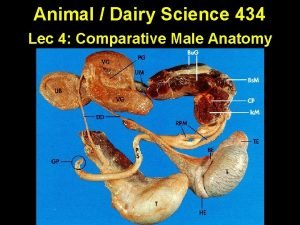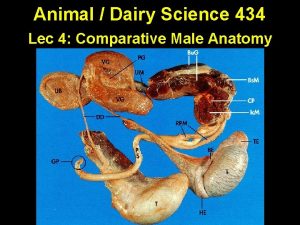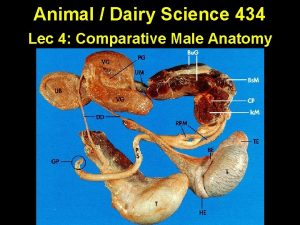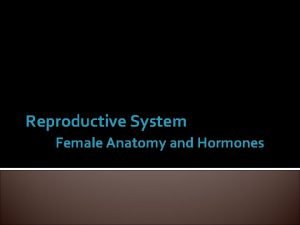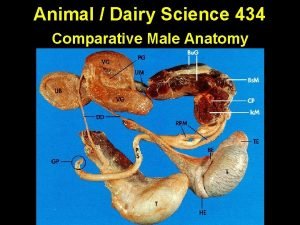AnimalDairy Science 434 Lec 2 Female comparative anatomy




































- Slides: 36

Animal/Dairy Science 434 Lec 2: Female comparative anatomy; History of Reproductive Physiology Kangaroo Rat Human

Ovarian Differences Mare Cow Sow

Cow Cow, Sow, Ewe, Human • Cortex on outside • Ovulation can occur on any point of the ovary Mare • Inversion of the cortex and medulla. • Ovulation occurs at the Ovulation Fossa Preovulatory Tertiary Follicle Internal CL Mare Sow Blood vessels and connective tissue in medulla

Uterine and Cervical Differences Sow Cow Mare

Duplex Rabbit, Mouse Oposum 2 Uterine Horns 2 Cervixes 2 Vaginas 1 Vagina

Bicornuate Cow Sow Ewe Smaller uterine horns 1 1 1 2 Vagina Cervix Uterine Body Uterine Horns Large uterine horns

Bicornuate Mare Large uterine body Smaller uterine horns 1 1 1 2 Vagina Cervix Uterine Body Uterine Horns

Bicornuate Dog Cat 1 1 1 2 Vagina Cervix Uterine Body Uterine Horns Small uterine body Long uterine horns

Simplex Woman Large uterine body No uterine horns 1 Vagina 1 Cervix 1 Uterine Body

Human Tract

Human Tract

Uterine Body COW Internal Cervical Os • Cervix is composed of thick connective tissue • Mucus is secreted near the time of breeding and ovulation. Cervix Cow has 4 -5 annular rings External Cervical Os Vagina

Mare Sow Uterine Body Longitudinal Folds No obstacles Interdigitating pads No fornix vagina Fornix Vagina

Cervix COW Internal Os Cervical Ring Fornix External Os EWE Anterior Vagina Fornix Anterior Vagina

Cervix Cervical Folds FV IP Sow Mare

External Genitalia Mare Cow Sow Ewe

Human Tract

External Genitalia

Vagina Anterior Vagina Posterior Vagina (Vestibule) Cervix Vulva. Vaginal Sphincter (Hymen) Fornix Columnar Epithelium Urethra Stratified Squamous Epithelium Mucosa Submucosa

Infundibulum perivitelline membrane Ovary Avian Female Anatomy chalazae albumen Magnum Oviduct shell membrane Isthmus Shell Gland Uterus Intestine cleaving blastodisc 24 hrs 50 K cells vagina cloaca Right Oviduct Left side of Reproductive Tract Develops!! shell

Chicken Tract Ovary Magnum Intestine Shell Gland

Chicken Ovary Hierarchal Follicles

Ovary with large follicles removed Ruptured follicle

Chicken Reproductive Tract Isthmus Infundibulum Magnum Shell Gland Cloaca Follicles

Infundibulum

Cloaca Vaginal opening Intestine opening

Cloaca of Chicken Intestine opening Vagina opening

Historical Development of Reproductive Physiology Aristotle 384 -322 BC • Fetus arises from menstrual blood Generation of Animals • Seminal plasma initiates the conversion of menstrual blood • Semen from all parts of body

The Age of Gross Anatomy • Fallopius (1562) – Describes the oviduct • Coiter (1573) – Describes the corpus luteum • Regnier de Graff (1672) – Describes the antral follicle (Graafian Follicle)

Development of the Microscope • van Leewenhoek (1677) – Describes spermatozoa in semen

What is the role of spermatozoa? • Spallanzani (1780) – Sperm were the fertilizing agent in semen – Successful artificial insemination of a dog • Dumas (1825) – Proves sperm the fertilizing agent

Modern Reprod. Physiology • • • Gonads produce steroid hormones Regulation of estrous cycles in females Radioimmunoassay (RIA) Artificial Insemination Cryopreservation Prostaglandin used to control estrous cycles • Biotechnology

Approach to Applications • Develop basic knowledge of how system works • Investigate methods that can perturb the system • Manipulate the system to improve reproduction

Enhancing Reproduction • Small improvements have profound effects on production – 3% improvement in birth rate results in an additional: • 1 million beef calves/year • 3. 2 million pigs/year • 3. 7 million gallons of milk/year

Current Trends Metabolic and Production Physiologic Changes Reproduction • Continuing need to: – improve reproductive performance – understand how to apply new technology

Limiting Reproduction Insects Humans Wildlife Pets
 Anatomy team 434
Anatomy team 434 Anatomy team 434
Anatomy team 434 Kj 434
Kj 434 Astm d4685
Astm d4685 Ece 434
Ece 434 Ece 434
Ece 434 Ece 434
Ece 434 434 x 2
434 x 2 Ece 434
Ece 434 Body parts name female
Body parts name female Nyhus classification
Nyhus classification Horse reproductive system
Horse reproductive system Squid rectum
Squid rectum Falopian tube parts
Falopian tube parts Angle of anteflexion of uterus
Angle of anteflexion of uterus Duct system female reproductive
Duct system female reproductive Female reproductive system
Female reproductive system Broad ligament
Broad ligament Female dog anatomy outside
Female dog anatomy outside Male vs female rat anatomy
Male vs female rat anatomy Oogenesis
Oogenesis Anatomy of woman
Anatomy of woman Where is the vulver
Where is the vulver Female anatomy
Female anatomy How kangaroos are born
How kangaroos are born Fallopian tube
Fallopian tube Gyneoid
Gyneoid Female anatomy cervix
Female anatomy cervix What is your favorite science subject
What is your favorite science subject Scoreboard architecture
Scoreboard architecture 11th chemistry thermodynamics lec 13
11th chemistry thermodynamics lec 13 Lec ditto
Lec ditto Scoreboarding computer architecture
Scoreboarding computer architecture Componentes del lec
Componentes del lec 11th chemistry thermodynamics lec 10
11th chemistry thermodynamics lec 10 Elements lec
Elements lec August lec 250
August lec 250
